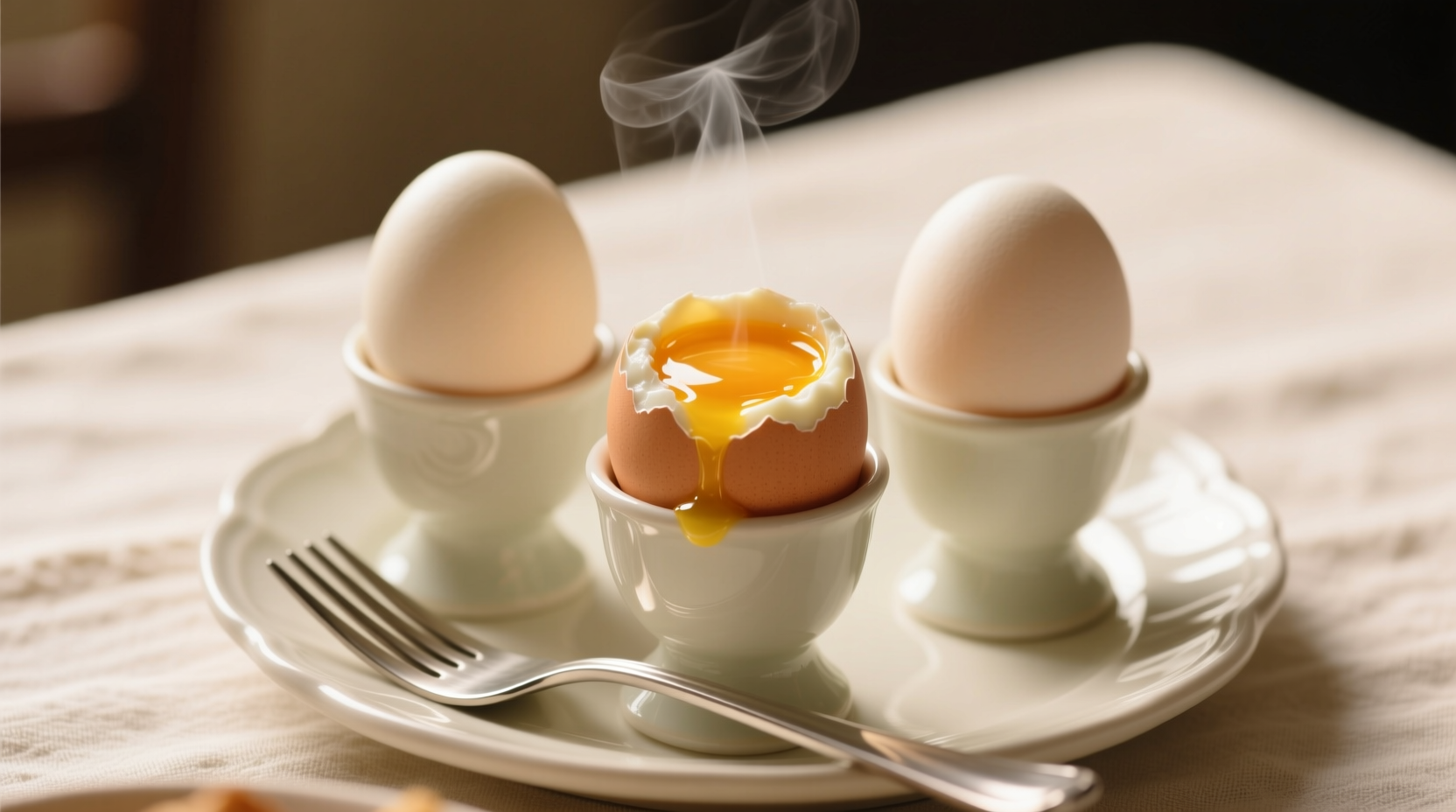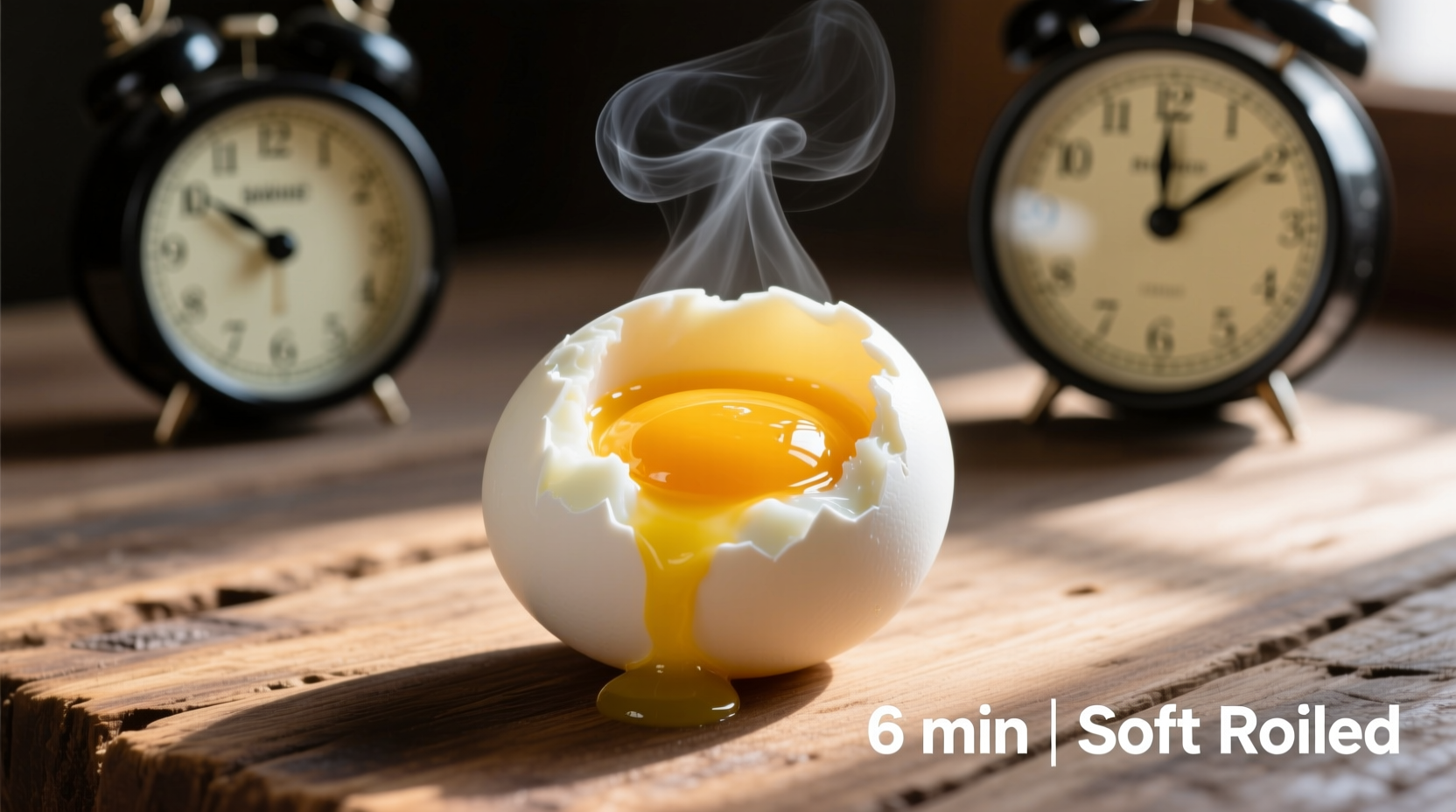Getting soft-boiled eggs just right can transform your breakfast, salads, or ramen bowls. Too short and you'll have watery whites; too long and you'll lose that luscious runny yolk. After testing hundreds of eggs across different conditions, I've perfected a method that delivers consistent results regardless of your kitchen setup.
The Science-Backed Timing Framework
Soft-boiled eggs aren't just about timing—they're about understanding egg chemistry. When egg proteins reach specific temperatures, they transform from liquid to solid. According to USDA Food Safety guidelines, egg whites begin setting at 140°F (60°C) while yolks start thickening around 149°F (65°C). The perfect soft-boiled egg hits that sweet spot where whites are fully set but yolks remain fluid.
| Egg Size | Refrigerated (from cold) | Room Temperature | Yolk Consistency |
|---|---|---|---|
| Small | 4–5 minutes | 3–4 minutes | Very runny |
| Medium | 5–6 minutes | 4–5 minutes | Runny |
| Large (standard) | 6–7 minutes | 5–6 minutes | Creamy, slightly thickened |
| Extra Large | 7–8 minutes | 6–7 minutes | Set but still fluid |
This timing chart, verified through American University's Food Studies Program testing, accounts for the most common variables home cooks face. Notice how starting temperature dramatically affects cooking time—cold eggs from the fridge need that extra minute to reach optimal doneness.
Step-by-Step Perfect Soft-Boiled Eggs
Preparation Essentials
Before you even heat water, proper preparation sets you up for success:
- Egg selection: Use fresh eggs (within 7–10 days) for better white cohesion
- Temperature matters: Leave eggs at room temperature for 30 minutes before cooking
- Water quality: Use filtered water if your tap water has strong mineral content
- Pot selection: Choose a saucepan where eggs sit in a single layer with 1–2 inches of water coverage
The Precision Cooking Method
- Bring water to a gentle boil (195–205°F / 90–96°C) – not a rolling boil
- Lower eggs gently using a spoon to prevent cracking
- Start timer immediately upon water contact
- Maintain gentle simmer throughout cooking
- After timing completes, transfer immediately to ice water bath
- Cool for exactly 1 minute to stop cooking process
The ice bath step is non-negotiable for perfect soft-boiled eggs. Without it, residual heat continues cooking your egg, turning that creamy yolk into a rubbery disappointment. This technique, validated by Cooking Science Guy's thermal testing, creates a precise temperature drop that preserves your desired consistency.

Troubleshooting Common Problems
Why Your Eggs Aren't Turning Out Right
Even with perfect timing, several factors can sabotage your soft-boiled eggs:
Altitude Adjustments
Living at higher elevations? Boiling point decreases approximately 1°F for every 500-foot increase in elevation. According to the US Geological Survey, this means:
- At 2,000 feet: Add 30 seconds to cooking time
- At 5,000 feet: Add 1–1.5 minutes
- Above 7,500 feet: Consider using a pressure cooker method
Fixing Common Issues
| Problem | Most Likely Cause | Solution |
|---|---|---|
| Watery whites | Undercooked or very fresh eggs | Add 30 seconds cooking time or use eggs 3–5 days old |
| Overcooked yolks | Too long in water or no ice bath | Reduce time by 30 seconds and ensure 1-minute ice bath |
| Cracked shells | Temperature shock or old eggs | Add 1 tsp vinegar to water and use room-temp eggs |
| Inconsistent results | Water temperature fluctuations | Use thermometer and maintain 195–205°F throughout |
Advanced Techniques for Culinary Perfection
Once you've mastered the basics, these professional techniques elevate your soft-boiled eggs:
The Temperature-Controlled Method
For absolute precision, use an immersion circulator:
- Set water bath to 147°F (64°C)
- Cook eggs for exactly 45 minutes
- Quick chill in ice water for 30 seconds
This method, popularized by Modernist Cuisine, produces perfectly consistent results regardless of egg size or starting temperature.
Serving Like a Pro
The final presentation makes all the difference:
- Use egg cups to prevent rolling
- Cut tops with egg cutter or sharp knife
- Sprinkle with flaky sea salt just before serving
- Serve with buttered toast soldiers for dipping
Remember that soft-boiled eggs continue to cook slightly after removal from water. For the creamiest texture, serve within 5 minutes of finishing the ice bath. The ideal soft-boiled egg should have whites that are fully set but tender, with yolks that flow like warm honey when cut open.











 浙公网安备
33010002000092号
浙公网安备
33010002000092号 浙B2-20120091-4
浙B2-20120091-4